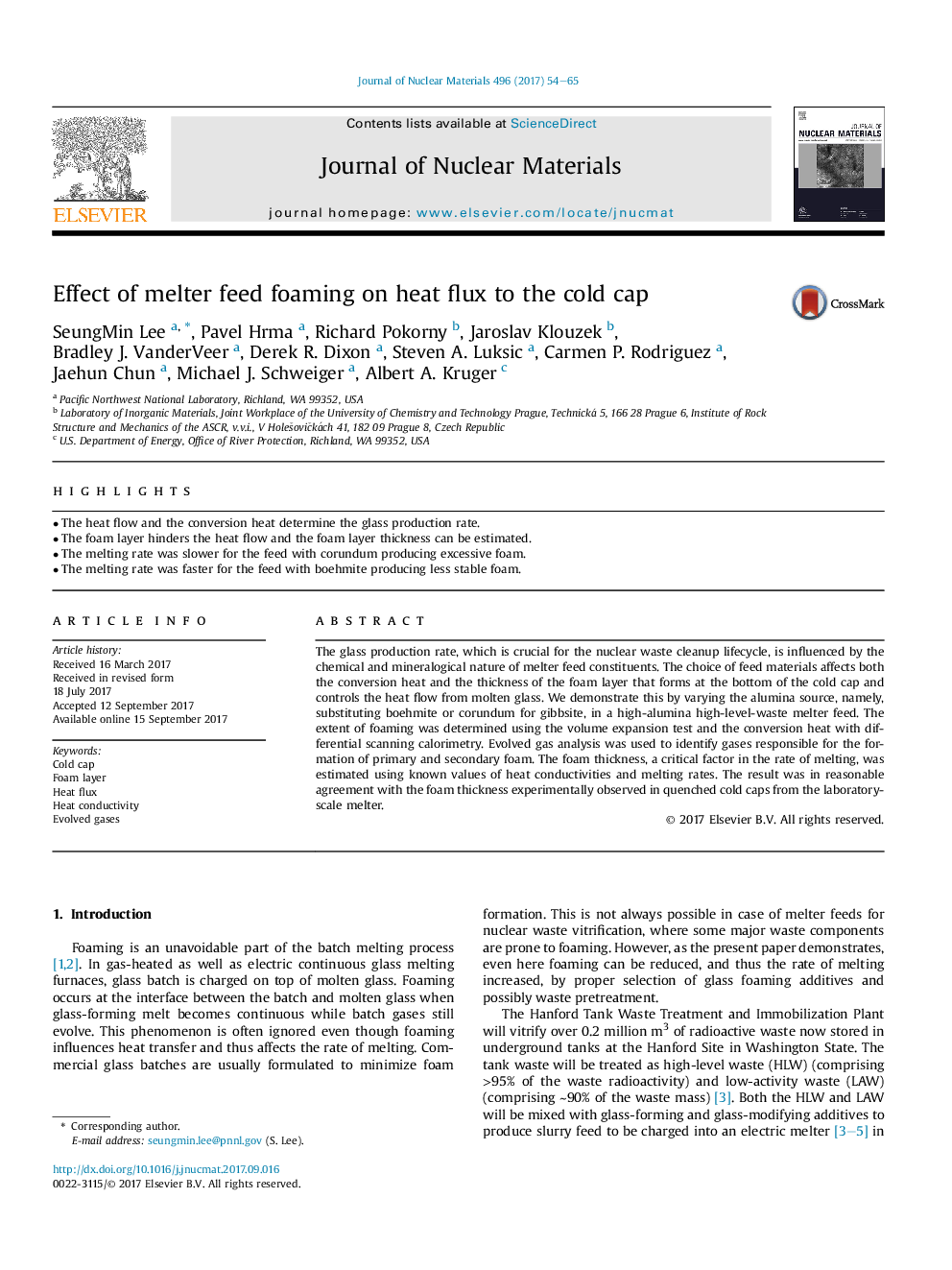| Article ID | Journal | Published Year | Pages | File Type |
|---|---|---|---|---|
| 5453794 | Journal of Nuclear Materials | 2017 | 12 Pages |
Abstract
The glass production rate, which is crucial for the nuclear waste cleanup lifecycle, is influenced by the chemical and mineralogical nature of melter feed constituents. The choice of feed materials affects both the conversion heat and the thickness of the foam layer that forms at the bottom of the cold cap and controls the heat flow from molten glass. We demonstrate this by varying the alumina source, namely, substituting boehmite or corundum for gibbsite, in a high-alumina high-level-waste melter feed. The extent of foaming was determined using the volume expansion test and the conversion heat with differential scanning calorimetry. Evolved gas analysis was used to identify gases responsible for the formation of primary and secondary foam. The foam thickness, a critical factor in the rate of melting, was estimated using known values of heat conductivities and melting rates. The result was in reasonable agreement with the foam thickness experimentally observed in quenched cold caps from the laboratory-scale melter.
Related Topics
Physical Sciences and Engineering
Energy
Nuclear Energy and Engineering
Authors
SeungMin Lee, Pavel Hrma, Richard Pokorny, Jaroslav Klouzek, Bradley J. VanderVeer, Derek R. Dixon, Steven A. Luksic, Carmen P. Rodriguez, Jaehun Chun, Michael J. Schweiger, Albert A. Kruger,
